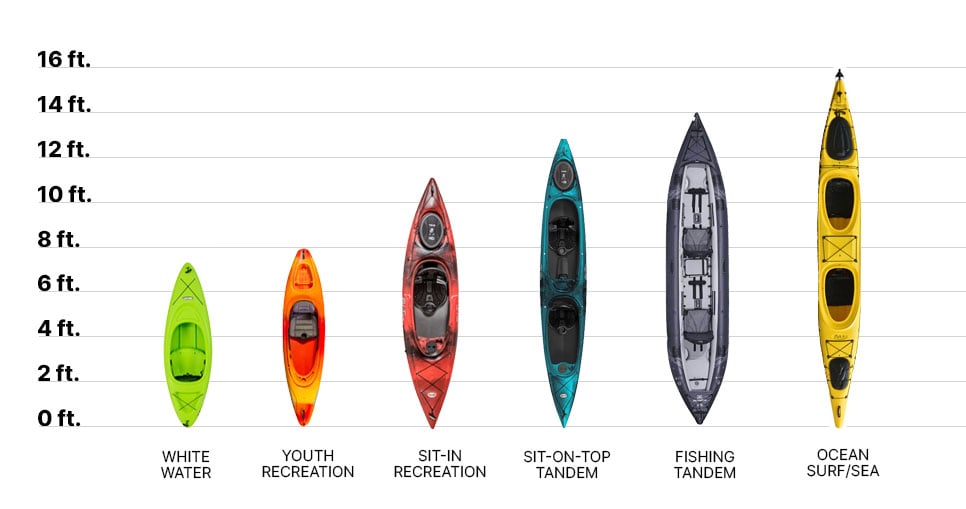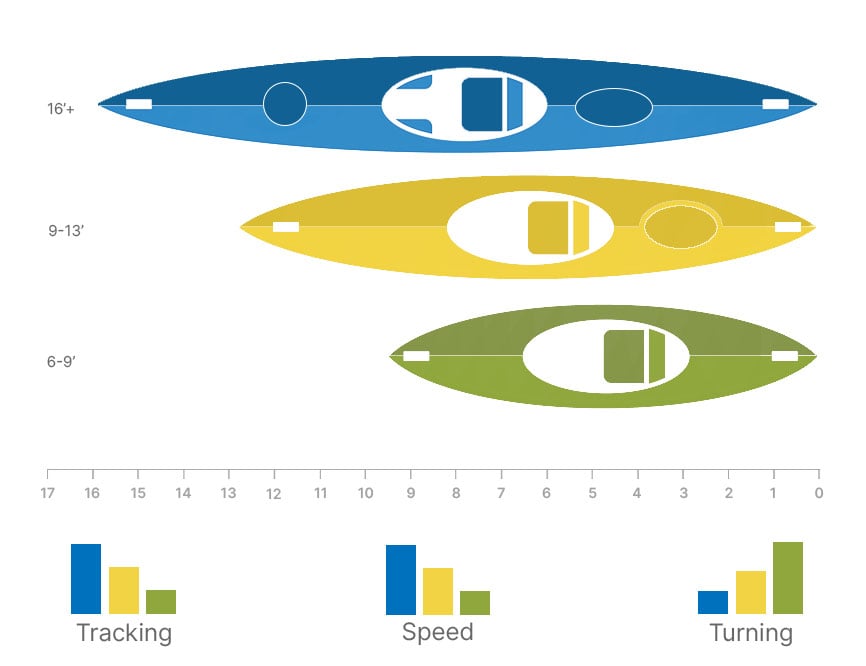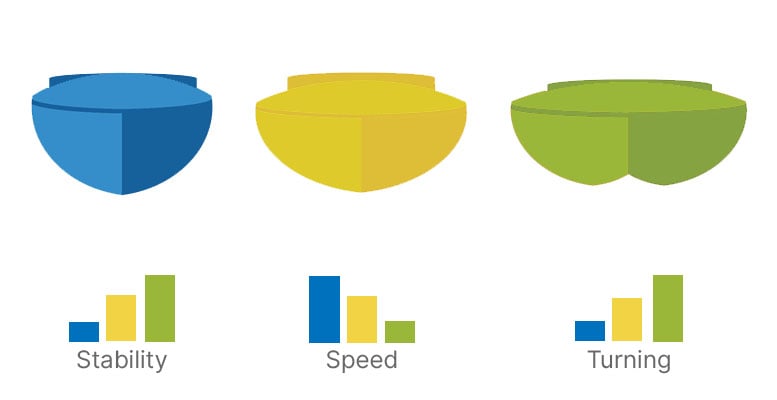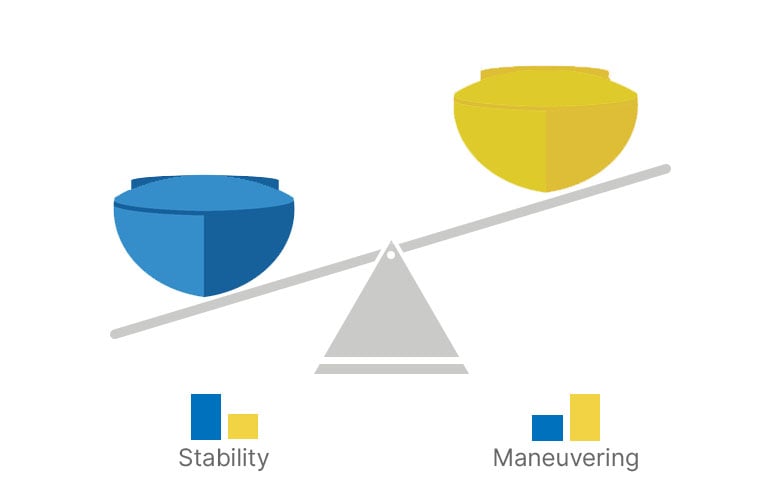Kayak Size & Length Charts
Selecting the right size kayak is key to having a productive kayaking experience. But what size kayak do you need? Correct kayak size depends on a number of factors including your size and intended usage. The following kayak charts will help you determine the perfect kayak size and length for your intended use.
Kayak Types and Lengths Chart

The above chart provides a visual guide of different types of kayaks and their average length.
- White water (6'-7') - White water kayaks are the shortest of all kayak models. They are built for superior maneuverability in fast moving current. They may be as short as 4 feet in length or as long as 9 feed for larger kayakers.
- Youth recreation (6'-8') - On average a kayak between 6 and 8 feet will be the ideal size for a youth between 8 and 12 years of age. Youth recreation kayaks of this size may be sit-in or sit-on-top, but are usually sit-on-top.
- Sit-in recreation (9'-11') - Sit-in or sit-on-top recreational kayaks average about 10' long. This is the most common kayak stype and size for recreational kayaking. These kayaks easy to transport and store.
- Sit-on-top tandem (12'-13') - Will accomodate 2 people comfortably. For open water on a lake or the ocean, the sit-on-top tandem kayak is the most popular recreational model.
- Fishing tandem (13'-15') - The average fishing kayak is 13 feet long. Tandem fishing kayaks are typically a few feet longer. Length is important for a fishing kayak because it provides better stability, storage space, bouyancy and room to stand up.
- Ocean Surf/Sea (14'-18') - Entry-level sea kayaks start at about 14 feet in length and go up to 19 feet for more experienced kayakers. Tandem sea kayaks may be a foot or two longer.
Length vs Tracking, Speed & Turning Ability

The above chart shows tracking, speed, and turning performance based on kayak length.
- Tracking - Tracking refers to a kayak's ability to move in straight path and "stay on track." There are several factors that play into how a well a kayak tracks including hull design and length. Kayak's with longer hulls tend to track better than kayaks with shorter hulls. If you're looking for a kayak for the ocean or a large flat lake a longer kayak that tracks well might be ideal. When you need a kayak with greater maneuverability a shorter kayak is preferred.
- Speed - The longer a kayak's hull the faster it will move through the water. Notwithstanding, reaching a maximum speed will still require output from the paddler. The shorter a kayak's hull the slower it will move through the water and the more output required from the padder to reach maximum speed. Longer kayaks allow you to cover more water in a shorter amount of time with less energy exerted.
- Turning - Shorter kayaks are substantially easier to turn and maneuver than longer kayaks. While a longer hull can track well, it can also become harder to turn the kayak. Shorter kayaks are ideal for beginners and when you're kayaking in an area where maneuverability is paramount.
- 6-9' kayaks - These are shorter kayaks that are easy maneuver. This kayak length is ideal for beginner kayakers and when maneuverability is of utmost importance. 6-9' kayaks work well for maneuvering narrow rivers and streams.
- 9-13' kayaks - This kayak length offers a compromise between tracking, speed and turning performance. These kayaks are build for stability and maneuverability over speed but are faster than shorter kayaks. This length of kayak are often used for fishing and personal recreation.
- 14+' kayaks - Kayaks in this length range track straighter than shorter hull kayaks. They also tend to be narrower. These kayaks are ideal for navigating open water. They're used for camping, recreation, touring and fishing since they offer ample space for gear and storage.
Recommended Kayak Length by Paddler's Height
| Height | Recreational | Touring | Whitewater | Tandem | Fishing | Inflatable |
| 5' or less | 8'- 10' | 12' | 4'- 7' | 10' - 12' | 10' | 8' |
| 5' to 5'6" | 8' - 12' | 12' - 14' | 4' - 8' | 10' - 14' | 10' - 12' | 8' - 10' |
| 5'7" to 6' | 10' - 12' | 14' - 16' | 5' - 8' | 12'- 16' | 12' - 14' | 10 - 12' |
| Over 6' | 12' | < 16' | 6' - 9' | < 14' | 14' | < 12' |
The above table shows recommend kayak lengths based paddler height and intended usage. Typically, the taller a paddler the longer the recommended hull length.
Width vs Stability, Speed & Turning Ability

The above chart shows stability, speed, and turning performance based on kayak width.
- Stability - Kayak stability increases with kayak width. The wider a kayak the more stability the kayaker will experience. A wider hull relative to length also provides better maneuverability.
- Speed - As the kayak hull becomes narrower speed tends to improve. As a kayak hull widdens speed tends to slow and more energy must be exerted to achieve and maintain speed.
- Turning - Kayaks with a wide hull are the easiest to turn. They tend to sit higher in the water and provide maximum maneuverability. Narrower kayaks tend to sit lower in the water and are more difficult to turn.
Weight vs Stability & Maneuvering Ability

The above chart shows stability and maneuverability based on kayak weight.
Kayaks that are the same shape and design may be made of different materials and have significantly different weights. Weight can impact kayak stability and maneuverability. Heavier kayaks tend to be more stable in the water, however, they are more difficult to maneuver. Lighter kayaks are more maneuverable, but not as stable as heavier kayaks.